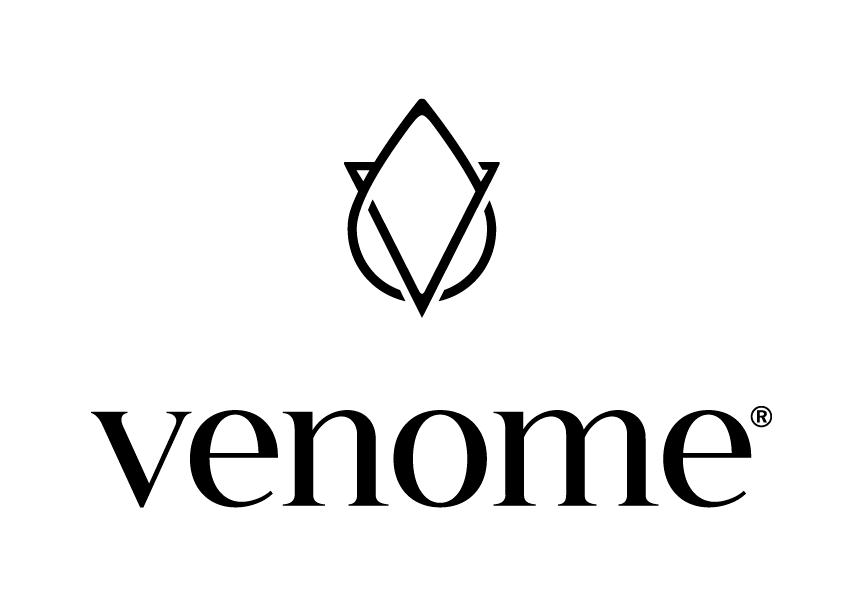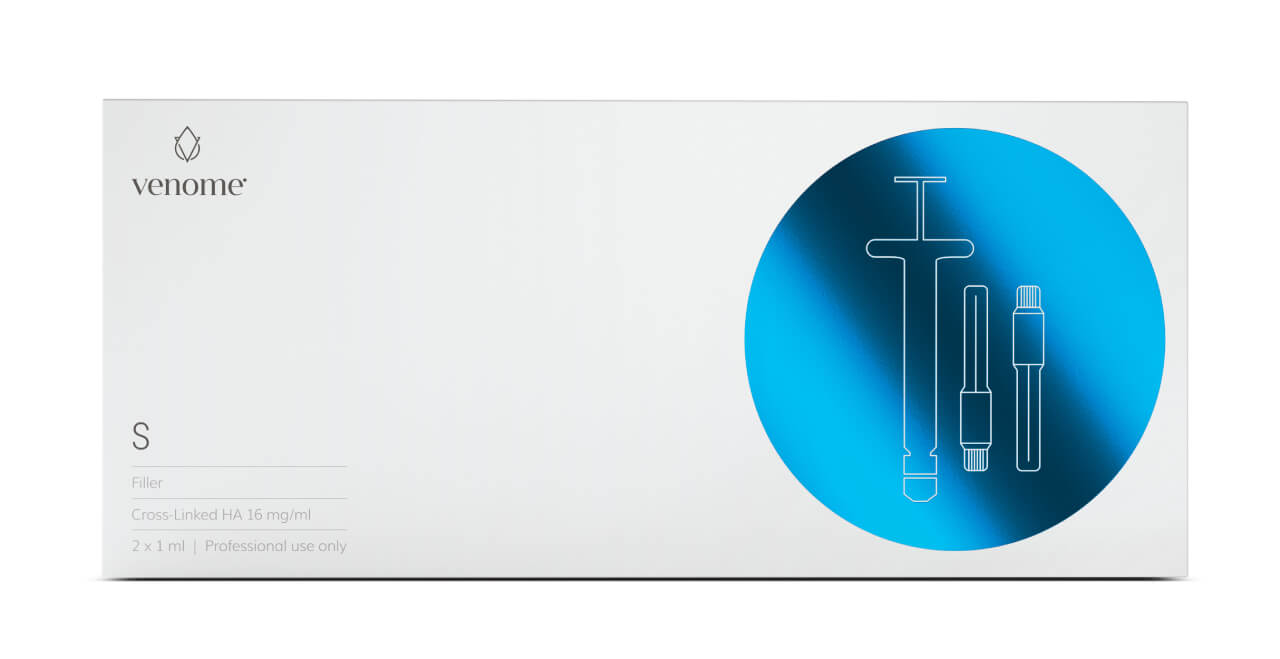FILLER S
Removes fine and medium wrinkles. Venome Filler S is a cross-linked hyaluronic acid gel dedicated to removing fine and medium wrinkles. Owing to the use of the cross-linking technology, which helps obtain the right elasticity and uniformity, the product is easy to administer. Its plastic properties allow the practitioner to massage the injection site to spread the product evenly across tissues. This ensures natural results and eliminates the risk of overcorrection. The hydrated formula of Venome Filler S minimizes the risk of post-treatment swelling, and as a consequence, reduces the recovery time, helping the skin to become firm quicker. The effect lasts between 5 and 6 months, though this depends on the injection technique, as well as a number of biological and environmental factors.
Medical device for external use, to be used by medical professionals only.
The product contains 16 mg/ml of monophasic, cross-linked hyaluronic acid in the form of viscoelastic gel.
Venome Filler is contraindicated in case of:
- allergy to hyaluronic acid
- auto-immune disease or during immunotherapy
- acute skin infection in the area to be treated (e.g. acne)
- acute influenza and feverish cold
- acute systemic infection (herpes, psoriasis)
- coagulation disorder
- a tendency to form scars
- pregnancy or breast-feeding
- people under age of 18
Venome Filler must not be injected into:
- blood vessels
- joints
- breasts
Not recommended for treatment of orbita and front head lines.
Side effects:
Immediately after treatment, injection related reactions like redness and swelling and in rare cases itching or bruising may be observed at the injection site(s). The day after a pronounced swelling may occur but this will resolve spontaneously within 3-5 days. Allergic reactions are extremely rare, because Venome Filler is protein free due to the non-animal source.
Rarely, formation of nodules or oedema may occur at the injection site.
In case of an inflammatory reaction it is recommended that the patient visits the physician.
In the literature for filler materials based on hyaluronic acid, individual cases of granuloma, abscesses, delayed hypersensitivity reactions and discolouration have been reported. Furthermore in literature, other very rare individual cases of necrosis have been described, due to injection into arterial vessels or occlusion by the filler pressing against the arterial wall.

